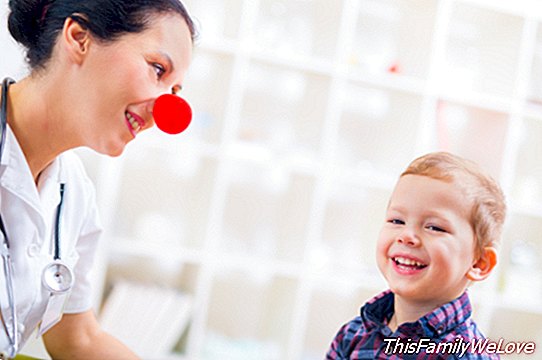30% of children are not being treated by pediatricians
Addressing a child and an adult in terms of health are two very different things. However, 30% of children in Spain are being treated by doctors, not by specialists in Pediatrics. The evaluation of the child population requires the presence of specialists in pediatrics, and although in Spain there are 6,400 pediatric spaces of Primary Care, the AEPap denounces that they are not enough.
In the framework of the 13 Course of Updating in Pediatrics of the AEPap, Dr. Begoña Domínguez, president of the AEPap, has emphasized that "for years,The deficit of pediatricians is an indisputable reality"In fact, it emphasizes that" according to the different Autonomous Communities, up to 30% of the child population is being treated by non-specialists in pediatrics".
The investment in necessary material and human resources is fundamental for the Primary Care pediatric services to function correctly in the Public Health Service. Therefore, today, the priority is to ensure the presence of pediatricians in the first level of care, responsible for direct care of children. However, there are many problems in the profession.
The pediatric overflow service
According to the data provided, in 2014 there were 33 million PA pediatric consultations in the National Health System (SNS). And the main problems focus on increasing the frequency of consultations, increasing the ratio and the lack of substitutions.

1. Periodicity of assistance for children's consultation. Dr. Dominguez notes that "normally, each child usually goes to the pediatrician's office 5 times a year, but the truth is that 55% of the consultations are for children under 4 years old with a frequency of 9 consultations in the section of Age from 0 to 4 years ".
2. Increase in the ratio. In addition to the increase in frequency, "the number of children assigned to each pediatrician quota has increased from 1033 in 2011 to 1043 in 2014, increasing by 23% the number of pediatricians with ratios of more than 1,500 health cards", points out the president of AEPap.
Both parameters are of particular concern because the quality of care is being affected, since at least 7 out of 10 pediatricians treat more than 20 children a day in consultations. In fact, Dr. Domínguez confirms that "only 9% of paediatricians of PC have an average of less than 20 patients a day" and alerts that "43% treat between 20 and 30 patients daily, and 33% from 30 to 40 ".
3. Lack of substitutions. "90% of PAPs have to pass queries from colleagues supplying vacations, training permits or sick leave," he adds. To guarantee the quality of care, maximum ratios of 1,000 health cards per pediatrician are required. "For this, it is essential to increase the number of pediatricians in at least 275 and adequately size the number of cards considering the characteristics of the population served," he says.
Training and research of primary care pediatricians
In the training aspect, there are different open fronts that prevent the training of both specialists in pediatrics in the exercise of their profession as well as newcomers.
- Continuing Education. It would be possible thanks to the permits, but as reported by the president of AEPap, "14% of PAPs are not entitled to any training day"The AEPap considers it" essential that all pediatricians have the right, at least, to 6 days / year of continuous training. "However, as for each Health Center there are between one and three pediatricians, Dr. Dominguez states that this "It makes almost impossible the continuous training in the center itself, being necessary the permits for the training outside the place of work".
- MIR training. In the last five years, the number of places of residents does not increase, on the contrary it is practically the same.
In addition, "despite not receiving any compensation, almost 50% of pediatricians participate in the teaching of the MIR", but according to the surveys," only 57% of the residents rotate during 3 months by AP. The rest do it for 1 or 2 months. "
Although the MIR pediatric training in AP has improved, "it is essential to comply with the rotation rule for 3 months and take advantage of the teaching capacity of PAPs to improve the training of residents", confirms Dr. Dominguez.
The difficulties that pediatricians find to be able to investigate in PA are, according to the president of the AEPap, "the isolation of the professionals, the lack of time, the training deficits and the lack of funding".To solve the lack of time, "we propose to the health authorities, the need for 25% of the working day to be dedicated to teaching, training and research tasks evaluated and considered in the professional career," he concludes.
Marisol Nuevo Espín




